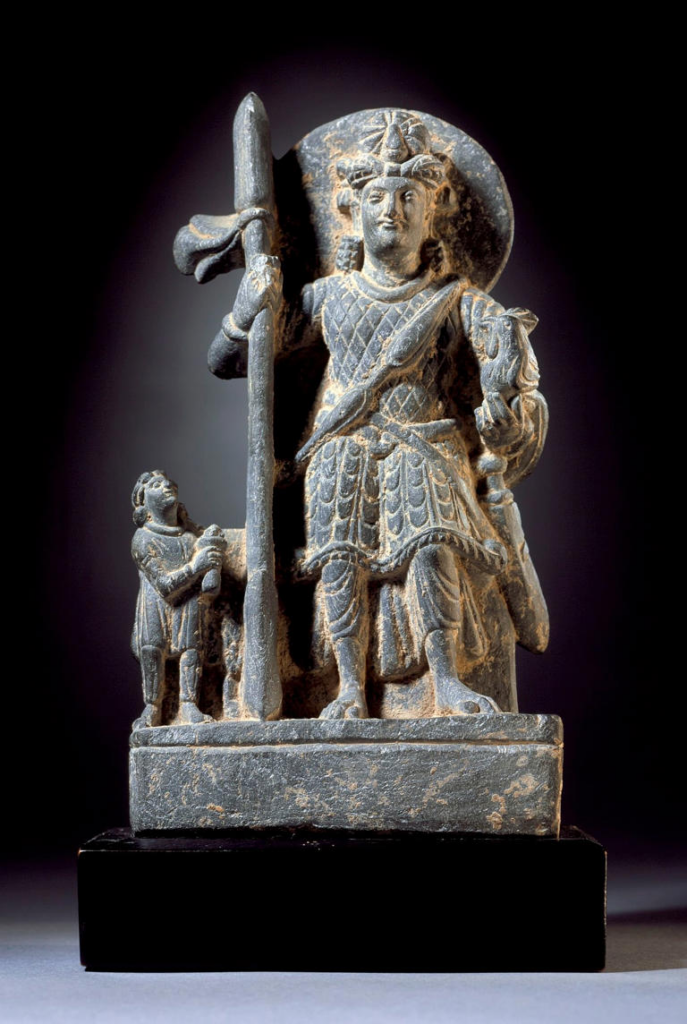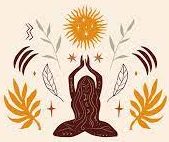Shiva, Skanda: How Hindu gods absorbed Iranian, Greek ideas
In the ancient world, just as today, gods were pressed into political service.
Shiva as a figure rippling with muscles, bearing a trident; Skanda as a tall youth grasping a gleaming spear; Durga as a goddess slaughtering a buffalo. All these depictions were shaped by a place that confounds unitary nationalist imaginations: Greater Gandhara. Here, Iranic, Hellenic and Indic gods were combined in weird and wonderful ways by diverse elites, laying the foundations for deities who are still revered today. Indeed, as much as we are fond of boasting of “Indian” gods being worshipped in medieval Southeast Asia, we owe much to the imaginations of Central Asian rulers who once shaped them.
‘Iranian gods in Hindu garb’
Gandhara, in present-day northwest Pakistan, was the crossroads of West, Central, and South Asia. At the peak of its power in the 2nd century CE, it was by far the greatest cultural force in all these regions. The Kushan Empire, which ruled it at the time, was originally a Central Asian confederation. It moved from the borders of Xinjiang (present-day western China) to Tajikistan and then to northern Afghanistan, before arriving within the Indian subcontinent. Along the way, the Kushans had picked up more and more gods, learning to assimilate them into each other and integrate them into royal self-presentation.
Interesting examples of this can be seen in how the Kushans treated Iranian gods, particularly of the Zoroastrian pantheon. In his paper Iranian Gods in Hindu Garb, archaeologist and art historian Frantz Grenet points out that the Avesta, the ancient Zoroastrian text contemporary with the Vedas, had “little interest in anthropomorphic images of the gods”. But these gods were certainly popular in the regions that the Kushans had begun to conquer by the 1st century CE. In order to present themselves as being supported by the Zoroastrian pantheon (and vice versa), the Kushans struck upon an innovative solution. They simply took regional deities that already had iconographic forms—particularly the Hellenic gods of the Bactrian and Indo-Greek kingdoms—and depicted them on their coins with Zoroastrian names.
Coins were tiny, portable pieces of royal propaganda, and they allow us an insight into how rulers wished to be seen. With a portrait of a Kushan ruler on the obverse and a popular god on the reverse, Kushan coins followed older Gandharan traditions in trying to claim divine favour. No less than fifteen Zoroastrian deities appeared in Kushan coinage: the supreme Zoroastrian god Ahura Mazda depicted as the supreme Hellenic god, Zeus; Mithra as the sun-god Apollo-Helios; Mah the moon-god as a masculine Selene, and so on.

Shiva, Skanda: How Hindu gods absorbed Iranian, Greek ideas
A three-headed Shiva-Oesho depicted blessing a Kushan worshipper—circa 3rd century CE | Wikimedia Commons
In a couple of cases, the Kushans attempted to integrate a South Asian god with Iranic or Hellenic models. A fascinating case of this, described by Professor Grenet, is of the god Oesho-Shiva. In the late 1st–early 2nd century CE, he appeared on the coins of the Kushan king Vima Kadphises with the titles of “Great Lord” and “Lord of all the World”, titles also used by Vima. These depictions were inspired by the Greek demigod Herakles, with a muscular body and occasionally a lion pelt. But by the 2nd century CE, under the Kushan emperor Kanishka and his successor Huvishka, Grenet writes that “the iconographic ties with Heracles are severed and the god exhibits the three-headed and four-handed type of [Shiva] Mahadeva.” He was also referred to by the name of an Iranian god, Oesho, who was originally related to the ancient Vedic wind-god Vayu. By this time he was worshipped as a god of cosmic space in Afghanistan and parts of Central Asia.
These depictions of the god would become fairly standard in Kushan coinage; Shiva had already been a popular god in Gandhara, and was becoming increasingly recognisable throughout South Asia thanks to the proselytisation of groups such as the Pashupatas. While Kushan subjects in Central Asia recognised Oesho coins as depicting their highest god, Kushan subjects in South Asia could recognise the same figure as Shiva.
From a terrifier to the Great General: Skanda and Mahasena
The Kushans were not the only group in the subcontinent who sought to integrate popular gods into their propaganda. Roughly around the same time that Kanishka was experimenting with his Shiva coinage, the Yaudheyas, a local group in present-day Haryana, were trying to claim another god for themselves: one Skanda the Attacker.
The origins of Skanda are unclear. In his pioneering art-historical and textual study, The Rise of Mahasena, art historian Richard D Mann analysed narratives from the Mahabharata as well as Ayurvedic traditions in search of answers. It appears that far from the victorious, martial son of Shiva that we are familiar with, in the earliest traditions Skanda was a terrifying six-headed god. In the Vana Parva of the Mahabharata, he is linked to another spear-wielding young god called Visakha. He initially has a terrifying personality, but when worshipped with Brahminical rituals, becomes a brilliant divine general. In the Vana Parva and in Canto 27 of the Sushruta-Samhita, (an Ayurvedic text), he is also associated with deities called the Matrs (“Mothers”) and Grahas (literally “Graspers”, not the navagrahas of the astrological tradition). These figures were connected with childbirth and child-rearing, sometimes even killing or stealing infants. In early beliefs, it seems the Grahas, Matrs and Skanda had to be propitiated, at which point they would act as protective gods.

Shiva, Skanda: How Hindu gods absorbed Iranian, Greek ideas
Goddess Sashti standing between two warriors—Skanda and Visakha—circa 2nd century CE, at Government Museum in Mathura, Uttar Pradesh | Wikimedia Commons
In the early 2nd century CE, the Yaudheya polity was on the verge of being wiped out by the Kushans. And so they tried to assimilate this protective form of Skanda into their coinage, depicting him and Visakha along with the Matrs. These coins were issued in copper for wide circulation, which suggests that the Yaudheyas were trying to appeal to the gods’ worshippers. This was ultimately unsuccessful: the Kushans soon took over the region and extended their control through the Gangetic Plains.

Shiva, Skanda: How Hindu gods absorbed Iranian, Greek ideas
Kushan sculpture of Mahasena in Scythian armour, with the rooster of a Zoraostrian god
The Kushans were not as interested in the fierce or protective Skanda of local traditions, preferring his martial aspect, known as Mahasena/Mahasenapati, the Great General. In the two centres of Kushan power in the subcontinent—Gandhara and Mathura—Mahasena was increasingly depicted alone, without any accompanying Matrs. Carved in stone as a strapping young man with a spear, inscriptions from Mathura suggest that he was being worshipped by local Kshatriya or warrior groups. In Gandhara, he was depicted wearing scale armour popular with Indo-Scythians, the nomadic warrior confederation assimilated into the Kushan Empire. In the coins of the Kushan emperor Huvishka, he is shown with a bird banner, a Zoroastrian emblem of kingship. Mahasena is also associated with the rooster, the bird of the Zoroastrian god Sraosha. The Rabatak inscription of the emperor Kanishka makes this quite clear. Sraosha is mentioned as one of the gods leading the worship of deified Kushan kings, and the inscription says that “in [the] Indian [language] he is called Mahasena and he is called Visakha”.
We can see the bold political intent behind Kushan royal policy: to select, appropriate, and meld together gods who were understandable in many ways to many peoples. Gods became figures who supported the Kushan ruler, both ritually and as foci for the worship of diverse elites. The consequences of these ancient political calculations are still visible; many South Asian rulers would go on to claim his favour in later centuries, and it is as the general of the gods, the son of Shiva, that Skanda is best known to Hindus today.
In Greater Gandhara, the close contact of diverse cultures and religions led to ideas and gods flowing in both directions. But this process was not simply an example of “tolerance”, or of “superior” Indian gods being accepted by “foreigners”. As we have seen, these developments were driven by politics, a phenomenon that continued in the region for centuries after. As always with Thinking Medieval, we see the futility of dividing up our complex histories along modern national borders, and the enduring political utility of appropriating the divine.
Anirudh Kanisetti is a public historian. He is the author of Lords of the Deccan, a new history of medieval South India, and hosts the Echoes of India and Yuddha podcasts. He tweets @AKanisetti. Views are personal.
This article is a part of the ‘Thinking Medieval’ series that takes a deep dive into India’s medieval culture, politics, and history.
